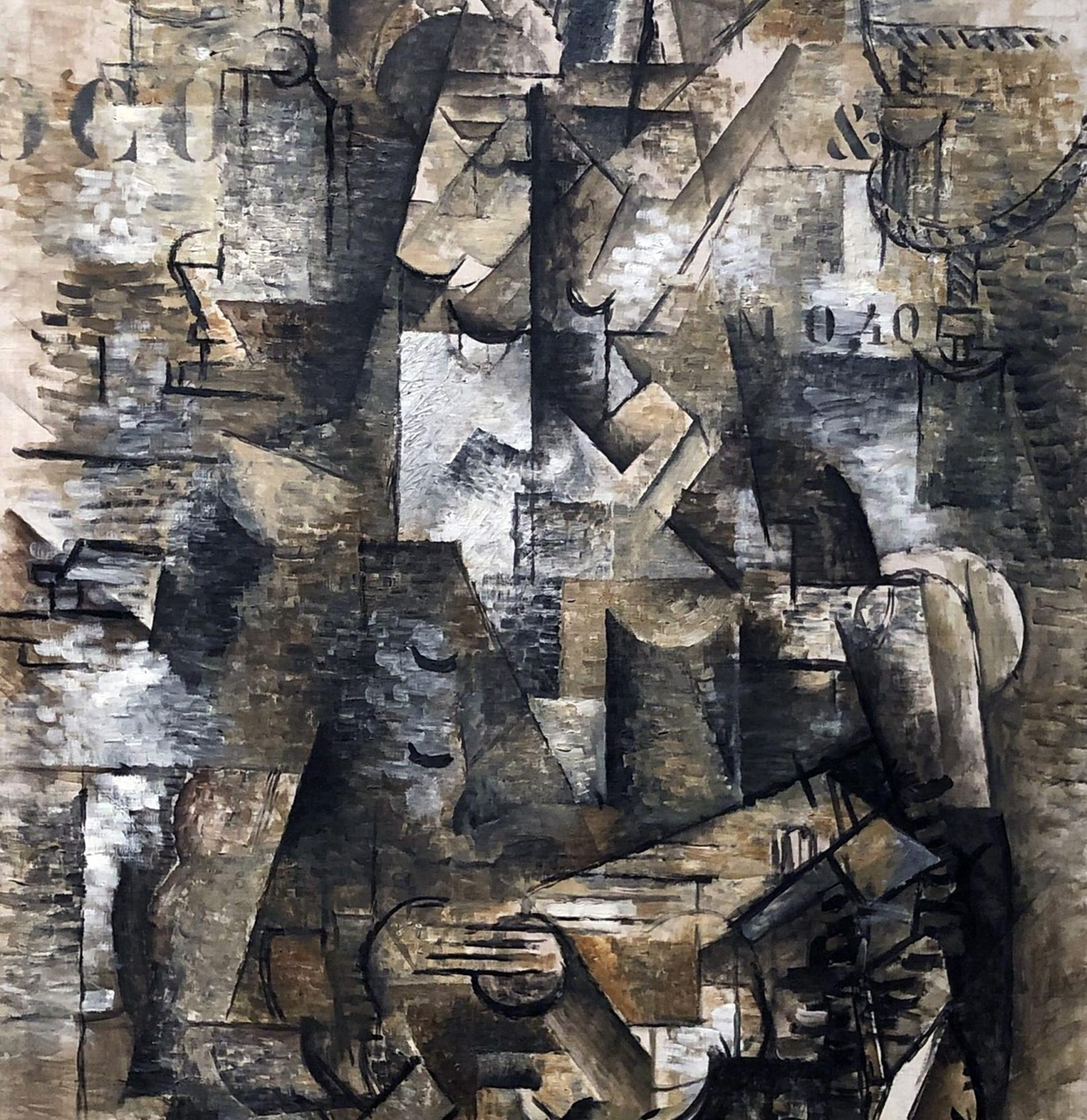Analysis of The Portuguese by Georges Braque
Historical Context
Painted in 1911, The Portuguese represents a pivotal moment in the development of analytical cubism, a movement spearheaded by Georges Braque and Pablo Picasso. This period was marked by a profound transformation in art, reflecting the rapid industrialisation and cultural shifts of early 20th-century Europe. Braque’s work followed the revolutionary impact of Picasso’s Les Demoiselles d’Avignon, building upon its rejection of traditional perspective and exploring the fragmentation of form. The painting was created during Braque’s collaboration with Picasso, a partnership that redefined the boundaries of visual representation.
Techniques Utilised
In The Portuguese, Braque employs geometric abstraction and overlapping planes to deconstruct the image of a Portuguese musician. The muted palette of browns, greys, and ochres focuses attention on form and structure, eschewing vibrant colours to emphasise tonal variation. The use of stencilled letters and numbers introduces a textual dimension, blending the visual with the conceptual. The fragmented forms and shallow depth challenge traditional notions of perspective, requiring the viewer to engage actively with the composition to discern its elements.
Impact on Cubism and the Broader Art World
The Portuguese is a landmark in the evolution of analytical cubism, exemplifying the movement’s intellectual and aesthetic rigor. Braque’s exploration of fragmented forms and textual elements influenced subsequent art movements, including Futurism, Dada, and Constructivism. This painting underscores the importance of cubism in challenging the conventions of visual art, encouraging artists to rethink the relationship between form, content, and perception. Its impact extends beyond the art world, resonating with broader cultural and philosophical shifts of the time.
Interpretation and Meaning
The fragmented forms in The Portuguese reflect the complexity and fluidity of modern identity. The inclusion of letters and numbers evokes themes of communication and meaning, blurring the line between the visual and the linguistic. The deconstructed image of the musician invites viewers to reconstruct the narrative, engaging with the artwork as an intellectual exercise. This interplay of abstraction and suggestion mirrors the fragmented nature of modern experience, making the painting a profound commentary on the human condition.
Connection with the Artist
The Portuguese illustrates Georges Braque’s deep commitment to innovation and his role as a co-founder of cubism. Influenced by Picasso’s Les Demoiselles d’Avignon, Braque pushed the boundaries of artistic representation, focusing on the deconstruction of form and the integration of text. This painting highlights his analytical approach to art, blending technical mastery with conceptual exploration. It also reflects his collaboration with Picasso, showcasing the profound impact of their partnership on the development of modern art.
Conclusion and Reflection
The Portuguese remains a seminal work in the history of modern art, embodying the intellectual depth and aesthetic innovation of analytical cubism. Its fragmented composition and textual elements continue to inspire contemporary artists, highlighting the enduring relevance of cubist principles. By challenging traditional notions of perspective and representation, Braque created a work that invites viewers to engage with art as a dynamic and multifaceted experience. This masterpiece underscores the transformative power of cubism, cementing its place as a cornerstone of 20th-century art.
